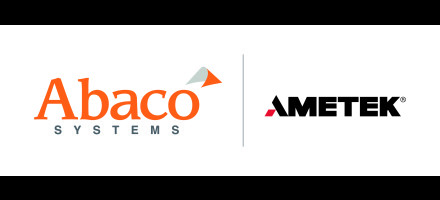High-speed Ethernet meets the armored cavalry
StoryJune 08, 2017
Tanks make good targets. They are large, heavy, slow, and hard to maneuver. They have to monitor their surroundings night and day to lumber through the terrain and engage or avoid their adversaries, as the situation warrants. In the urban battlefield so common in today's asymmetrical conflicts, these vehicles also need to deal with improvised explosive devices (IEDs), snipers, and suicide bombers and must distinguish between hostile civilians and innocent bystanders.
Tanks make good targets. They are large, heavy, slow, and hard to maneuver. They have to monitor their surroundings night and day to lumber through the terrain and engage or avoid their adversaries, as the situation warrants. In the urban battlefield so common in today’s asymmetrical conflicts, these vehicles also need to deal with improvised explosive devices (IEDs), snipers, and suicide bombers and must distinguish between hostile civilians and innocent bystanders.
That’s why tomorrow’s combat vehicles will be equipped with an array of optical, thermal, acoustic, and perhaps even electronic warfare (EW) sensors that hoover up vast quantities of environmental data in order to maximize 360-degree situational awareness and find the enemy before themselves being found.
As vehicle sensors increase in numbers and sophistication, processing bandwidth must expand to keep ahead of the data curve. The faster the data can be ingested, sampled (if analog), and distributed to processing resources, the higher fidelity the signals will be, the more precise the measurements based on them will be, the more complex algorithms can be run, the more targets or images can be distinguished, and the faster the response time will be to respective threats.
Ethernet to the rescue
What’s better than high-speed Ethernet to distribute vast quantities of data collected by high-bandwidth sensors to processing resources? In its trajectory from the 1970s until today, Ethernet has gone from just a few Mbits/s to a Gigabit and on to 10 Gbits/s. Just over the horizon is a 40-Gbit/s standard. Ethernet’s 40-year-old technology is well understood, ubiquitous, and affordable. Best of all, from a military point of view, industry standards have been developed to allow Ethernet’s use in the most extreme military environments and to ensure reliability as well as performance.
High-speed Ethernet is also a must-have in the connected world, as the glue holding together various legacy vehicle data bus domains and linking directly to Ethernet-speaking sensors. The technology is also fundamental to the Internet of Things (IoT), whereby machines talk to machines as well as to their human minders. Nevertheless, today’s vehicle graphics processors typically feature, at most, one 1-Gigabit Ethernet port.
Other COTS elements
Commercial off-the-shelf (COTS) graphics and vision processors are rising to the challenge of high-bandwidth sensors. The latest generation of systems-on-module (SoMs) combines massively parallel graphic processing units (GPUs), traditional central processing cores, large memory stores, and I/O including connectivity to such channels as controller area network bus (CANbus) and MilCAN, as well as Ethernet.
This type of processing power in such a small package is sufficient to enable functions such as image recognition; target detection; and image correction, fusion, and tracking in a small but rugged vehicle computer.
What’s more, multiple SoMs could be ganged together in a force-multiplier effect while still meeting the military’s demand for minimal SWaP-C (size, weight, power, and cost). Or the modules could be used in smaller vehicles and autonomous vehicles as mission computers as well as graphics processors.
Links like CANbus collect vehicle data such as speed, location, heading, and engine and transmission system temperatures from the vehicle control system and fold it into the graphics data to provide context for graphics and vision processing.
An example of a board with this capability is Abaco Systems’ GVC1000, which features the NVIDIA Jetson TX2 SoM – with 256 CUDA cores, dual Denver cores, and four ARM A57-class CPU cores, capable of producing over 1 TFLOPS (Tera-Floating-Point-Operations-Per-Second) of performance – in a ruggedized package with two 10-Gbit/s Ethernet ports and a choice of either two MilCAN or CANBus ports. (Figure 1.)
GPU-accelerated computing promises to advance the offensive and defensive capabilities of modern combat vehicles. Heterogeneous architectures combine the best of both worlds. Their massively parallel graphics processors can handle the thousands of simultaneous, repetitive operations involved in signal and image processing, while their CPU cores manage the simpler cores, analyze the results, and dispatch the solutions to the correct destinations.
The most powerful SoMs promise not only to make manned combat vehicles more capable, but also to make autonomous ground combat vehicles more of a force to be reckoned with. One or more of these modules could allow the execution of algorithms that would enable enhanced vision-based machine intelligence and real-time decision-making capabilities.
Figure 1: Abaco’s GVC1000 provides connectivity to different types of video and graphics applications.
(Click graphic to zoom by 1.9x)
www.abaco.com








